Abusing caffeine can have adverse effects on sleep and lifestyle habits, especially when adopted during adolescence, the years between puberty and adulthood. Early consumption of caffeine is also linked with other substance abuse in later years, according to Juli Bierwirth, a food safety consultant with a master’s degree in nutrition from Johns Hopkins University.
Caffeine intake among adolescents has not increased in recent years, wrote Amy Branum, Lauren Rossen and Kenneth Schoendorf in the journal American Academy of Pediatrics, but coffee and energy drinks represent a greater percentage of caffeine intake as soda intake has declined.
Ansley Davenport, a fourth-year history student at The University of Georgia, commented “Neither one of my parents drink coffee or tea. They drink soda like Diet Coke.”
However, soda as a source of caffeine did not appeal to Davenport. She started drinking caffeine-free tea in high school and then black coffee in college. Coffee is not a cultural expectation to Davenport, but coffee consumption is functional as well as experiential.
“I think it just became one of those things where coffee has a stronger kick to it than tea does, said Davenport. “So, I’ll have coffee just to give me that extra boost in the morning.”
Davenport emphasized that she does not consume caffeine past 1 p.m. but will enjoy the occasional decaffeinated iced latte in the afternoon.
Why It’s Newsworthy: On a given day, about 70% of adolescents consume caffeine, according to Amy Branum, Lauren Rossen and Kenneth Schoendorf in the journal American Academy of Pediatrics. Informing adolescents about safe practices for caffeine consumption can help them form healthy habits for the future.
Caffeine can be responsibly regulated by dosage, time of consumption, weight and age. Although caffeine can be abused like any other stimulant or drug, it can be safely—and enjoyably—consumed in moderation, according to the Addiction Center.
Caffeine Dosage and Tolerance
The typical dosage for various caffeinated beverages is not standardized: a cup of coffee can have as few as 100 milligrams while an energy drink can have as much as 300.
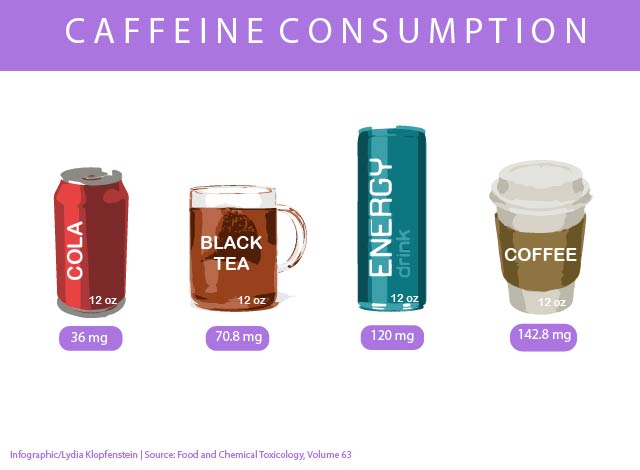
Knowing how much caffeine is in a product allows consumers to regulate their daily intake. A cup of tea or can of soda during a mid-afternoon slump is much less likely to disrupt sleep patterns than an energy drink.
The half-life of caffeine, or time required to reduce caffeine dosage to half its initial value, is about five hours. If you were to start consuming caffeine with a cup of coffee in the morning, an energy drink during an afternoon slump, a soda with lunch or dinner and a cup of black tea before bed, you would still have about 150 milligrams in your system at 10 p.m., and it would not exit completely until the following day.
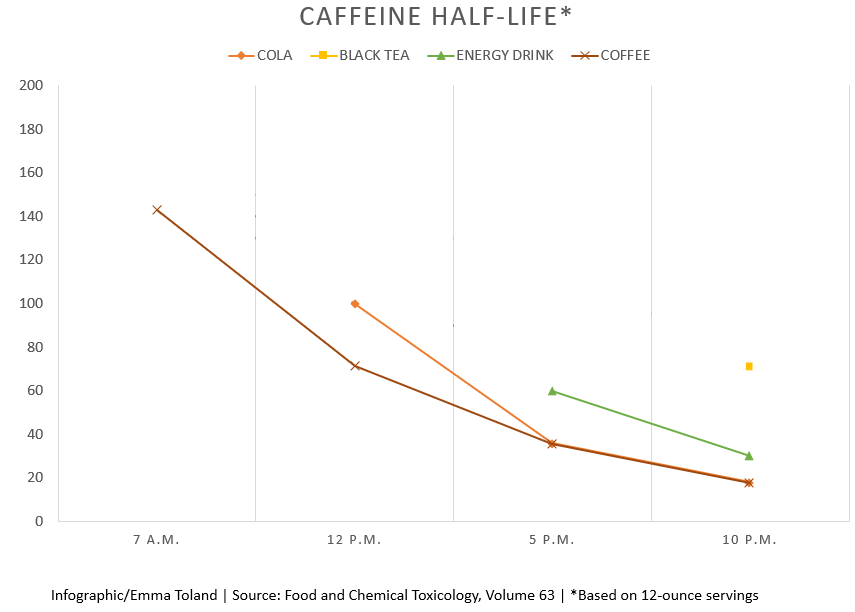
Here is what we do know about the effects of caffeine in the body:
|
Short-term |
Long-term |
Overconsumption |
|
|
|
Source: Alcohol and Drug Foundation
The effects of caffeine are magnified in those who are caffeine-naive, or first time and infrequent drinkers who are more likely to feel short-term effects. Conversely, those who consume caffeine regularly are less likely to feel these same effects due to a higher tolerance, according to Bierwirth.
Caffeine and Adolescents
Caffeine can be consumed safely by adolescents, but the amount should be calculated based on the weight of the drinker, Bierwirth said. “It’s 2.5 milligrams of caffeine for every kilogram of weight” for adolescents.
Habits often form at a young age from parents, friends and other sources, Adam Goodie, a psychology professor at the University of Georgia, said.
“We’re all influenced by multiple people, and even if we’re more influenced by our parents than any other one person, there are a lot of other people out there influencing us,” said Dr. Goodie. “And it is my sense that parents are mostly out there trying to limit their adolescent’s caffeine intake, but other adolescents and certainly product marketers are out there encouraging adolescents to use caffeine.”
As far as the effects of caffeine habits go, the data is limited. There are correlations between caffeine consumption and anxiety, as well as the abuse of other addictive substances like alcohol, but whether that link exists because of caffeine or some other element has not been tested, according to Bierwirth.
“We’ll just probably never know,” said Bierwirth. “We can’t just force kids to drink lots of coffee and then see what happens to them.”
It’s far more important for parents to teach their kids about healthy caffeine habits than it is to try and control their intake, Bierwirth said. For instance, she recommends teaching teenagers to limit the bulk of their caffeine consumption to the morning and early afternoon, and having frank discussions about the importance of healthy sleep habits.
Sleep Cycles
Caffeine inhibits a sleep signal called adenosine, which is what makes you feel tired. This is why caffeinated beverages are marketed so heavily toward over-worked and sleep-deprived individuals.
Bierwirth refers to adenosine as the body’s timekeeping mechanism.
“Adenosine gets washed away and you start fresh if you sleep a full night,” said Bierwirth. “But if you sleep only three hours, you’ll wake up and still have some adenosine and it’s going to feel like it’s five o’clock at night. So the caffeine is coming in and stopping your body from even processing that there’s adenosine there in the first place.”
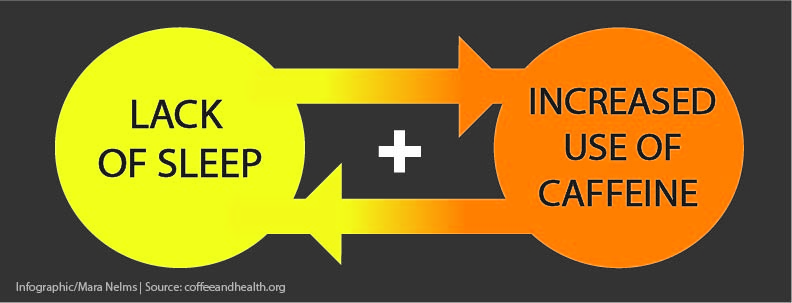
A lack of sleep creates a positive feedback loop, but it is not positive in a good sense. The less sleep a person gets, the more likely they are to increase caffeine consumption. This appeals to caffeine consumers, but also creates a cycle of poor sleep hygiene, according to Goodie.
“It is my sense that kids are starting to use caffeine earlier,” said Goodie. “With Monster and other energy drinks that are often largely based on caffeine that didn’t exist 20 years ago, I think that has expanded caffeine use among younger demographics.”
Adolescents drinking caffeine is not the end of the world, according to Bierwirth. Rather, they just need some direction to show them how to not abuse it, a similar conversation parents have with their kids about handling alcohol.
Mary Martin Harper, Lydia Klopfenstein, Mara Nelms and Emma Toland are seniors majoring in journalism at the Grady College of Journalism and Mass Communication at The University of Georgia.


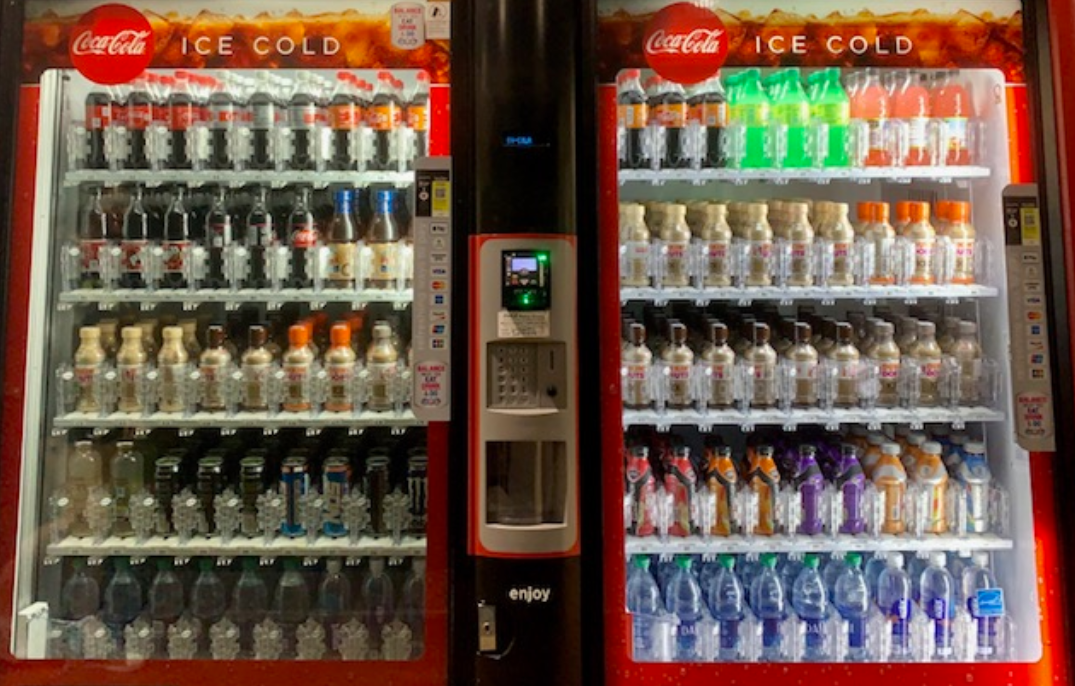



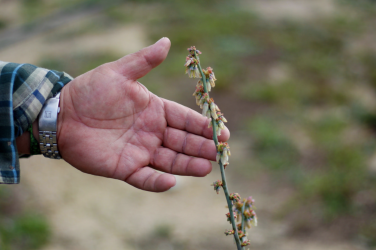



Show Comments (0)